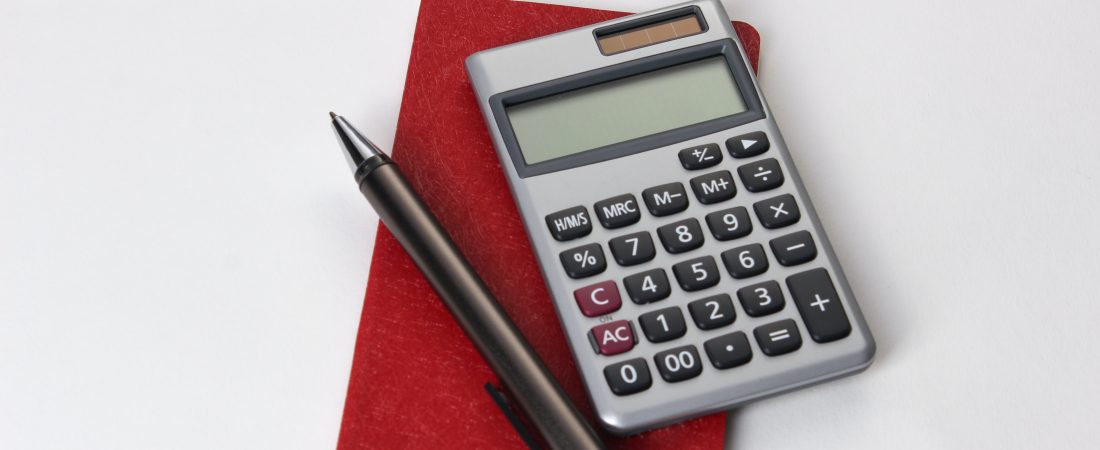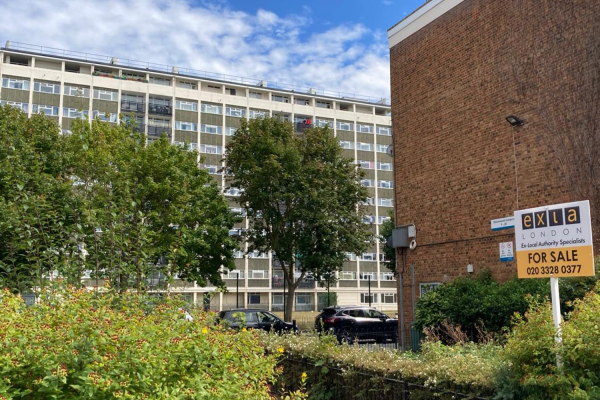Understanding how to calculate ROI in property is a must for landlords aiming to assess the profitability of their buy-to-let investments.
ROI, or Return on Investment, measures how much profit a property generates relative to the total costs involved.
Knowing what constitutes a good ROI and how to improve it can help you make more informed decisions and maximise your returns.
It’s important to distinguish ROI from rental yield – while rental yield focuses on annual rental income, ROI considers the overall return on the money you’ve invested.
- How to calculate rental property ROI
- What is a good return on investment for rental property?
- Tax implications
Get the best mortgage solution at the most competitive rate, no matter the type of rental property. Find Out More
How to calculate rental property ROI
To work out the ROI for a rental property, start by adding up your annual rental income.
Then, subtract all your expenses, like mortgage payments, management fees, repairs, services, and any time the property is empty.
Take what’s left (your net income), divide it by the cash you put into the property, and multiply by 100 to get your ROI as a percentage.
When we say “cash you put in,” we mean your own money, not the mortgage. For example, if you bought a property for £400,000 in London using a £250,000 buy to let mortgage and £150,000 of your own cash, your cash investment for calculating ROI is £150,000.
Calculating ROI with a mortgage
Let’s take a £400,000 property in London and work out the ROI, assuming you took out a £250,000 mortgage.
- Monthly rent: £2,000
- Annual rent: £2,000 × 12 = £24,000
- Annual costs, including mortgage repayments:
- Mortgage payments: £10,000
- Repairs and maintenance: £1,500
- Insurance and other expenses: £500
- Total annual costs = £10,000 + £1,500 + £500 = £12,000
- Net annual profit: £24,000 (rent) – £12,000 (costs) = £12,000
- Purchase price: £400,000
- Mortgage used: £250,000
- Cash invested: £150,000
ROI is calculated by dividing the net annual profit (£12,000) by the cash invested (£150,000) and then multiplying by 100, giving a return of 8%.
You might also be interested in…
- What Are the EPC Requirements for Landlords?
- Renting to Students: Guarantors, Advance Payments, HMO licence and more
- Holding Deposit, Tenancy Deposit, Rental Fees: Everything You Need to Know
- How to Serve a Section 21 Notice to Tenants
- What is an HMO? How Do I Convert My Property?
Calculating ROI without a mortgage
This time, let’s use the same £400,000 property, but assume it was purchased outright with no mortgage. The calculation now looks like this:
- Annual rent: £24,000
- Annual costs without a mortgage: £2,000 (including maintenance, property management, insurance, etc.)
- Net annual profit: £24,000 (rent) – £2,000 (costs) = £22,000
- Purchase price: £400,000
- Mortgage used: £0
- Cash invested: £400,000
ROI is now calculated by dividing the net annual profit (£22,000) by the cash invested (£400,000) and then multiplying by 100, giving a return of 5.5%.
You can see that your ROI is much lower in the second example without a mortgage (5.5%) compared with the first example where you invested less with a mortgage (8%).
What is a good return on investment for rental property?
As seen with the £400,000 property example, your ROI can vary significantly based on the way you choose to invest.
So, what’s considered a good ROI for a rental property, especially when the two ROIs in our example are quite different?
The key takeaway is that your ROI should be positive, indicating you’re making a profit. Whether this is deemed “good” depends on your investment goals.
For those investing for the long term, such as using rental income to support a future pension, a lower ROI in the short term may be perfectly acceptable.
If you have a repayment buy to let mortgage set to be cleared within 15 years, for instance, your ROI will improve as the mortgage is paid off.
Once that happens, your ROI will look much stronger, as mortgage costs will no longer be a factor. For example:
- Annual rent: £24,000
- Annual costs (now without mortgage repayments): £2,000
- Net annual profit: £24,000 (rent) – £2,000 (costs) = £22,000
- Purchase price: £400,000
- Mortgage used: £250,000 (mortgage is now paid off)
- Cash invested: £150,000 (total initial investment)
ROI is now calculated by dividing the net annual profit of (£22,000) by the initial cash invested (£150,000) and then multiplying by 100, giving a return of 14.6%.
By any standard, that’s a solid ROI. In reality, however, the situation would be even better, as you’ve now built up significant additional capital in the property – specifically the £250,000 once the mortgage is paid off.
Moreover, you’d benefit from any increase in property value if you decide to sell, although it’s important to remember that you’d be subject to capital gains tax on the profit.
Our premium tenancy creation service covers referencing, contract signing, money handling, and more – all for just £69. Create Your Advert Today
Tax implications
Income tax and capital gains tax
When looking at your returns, remember that the examples given are before tax. It’s important to factor in income tax when assessing any investment. Your rental profits will be taxed at your marginal rate.
If you’re already a higher-rate taxpayer, or if your rental income pushes you into that bracket, you could pay 40% or 45% tax on your profit.
If you pay interest on a buy to let mortgage, you are no longer able to use the full amount of this interest to reduce your profits and tax bill, but you can usually still receive a tax credit of 20% on the amount paid in interest.
If you have no other income, you may be able to use your personal allowance (currently up to £12,570) to cover all of your rental profits.
Full details of taxation for landlords can be found on the government’s website and you may wish to take independent advice from an accountant if you are unsure of how the income from your rental property will be taxed.
Capital growth and selling your property
If you’ve built up a property portfolio, you might decide to sell one or more properties to free up cash – perhaps to add to your pension pot or invest in low-risk options as retirement approaches.
Before you sell, make sure to factor in any capital gains tax you’ll need to pay. If you’ve owned the property for several years, it’s unlikely the value will have gone down (unless the market has taken a major hit).
In most cases, you’ll sell for significantly more than you paid. Keep in mind, CGT on property sales is charged at 18% for basic-rate taxpayers and 24% for higher and additional-rate taxpayers for profits in excess of an annual allowance which is currently £3,000 per year (figures correct as of November 2024).




always assuming no void periods and no bad payers
Not sure I agree with this bit…" For those of you looking at a long-term investment, maybe hoping a rental will contribute towards a future pension, you will be okay with a lower ROI in the short-term. Perhaps you have a repayment buy-to-let mortgage which will be paid off within 15 years when you hope to retire. When you come to work out your ROI then, it will be considerably improved. When we look at your new ROI calculation, the figures change because mortgage costs are no longer a factor".
You have paid the mortgage off, albeit with funds from the rental, so your capital invested is still £150,000 because you could have spent that money on something else (eg another property).
For investment comparison you should also look at it based on the current value (less tax) too because you need to compare it to what else you could do with the money (the opportunity cost). If your profit is, say, £10,000 pa, the return based on the Openrent calcs would be 20% Let’s say you’d net 250k after tax if you sold it, that calc would give you a 4% return. Obviously, there is the potential for capital growth to take into account too, but, at that stage, £250k is what you actually have invested in the property, regardless of what you put in to start with.
Ummm, no it won’t
To put some simple figures on it…
Say I have a house worth £100,000 with a £75,000 mortgage and make a profit of £1,000.
I have £25,000 invested in the house so the ROI on that is 1000/25000 = 4%
Now say I pay the mortgage off and my mortgage interest was £150 per month. I now have a profit of £2,800, but my capital invested is £100,000. So my ROI is now 2800/100000 = 2.8%
I would only be better off paying off the mortgage if my mortgage rate was higher than the the ROI - in which case, you’d probably have to question whether you had a viable rental property anyway.
I should really stop posting, as this entire forum seems to be a troll-training ground!
But, I love maths problems…
Essentially RoI/RoC calculations are simple…
There are two assets
There is one debt
Change in debts
Calculating the debt in the mortgage is easy, as it is simply the amount of money it would take to cancel the mortgage (including early repayment costs). This cost and arrangement fees will mean that you will generally start with a “debt” greater than the cost of the house.
Change in assets
Estimating the value of the house is harder (obviously), but you could make some assumptions
Depreciation
Accounting for depreciation is an art-form, and is covered by many different accounting principles. All of which I’m ignoring… As an example, I will keep it simple.
If you do this per room, and include things like electrical-items, etc, you can come up with a realistic figure for depreciation.
Cash assets
In essence simple, money in - money out.
NOTE: Treat maintenance costs as “purchasing depreciation”.
A simple example over 25 years : using fake figures
Assumes …
Starting with £50,000, spending half on a deposit and keeping half to cover costs.
– £250,000 (house)
– £25,000 (cash)
– £230,000 (mortgage)
Expected end position
– £500,000 (house)
– -£50,000 (depreciation - say 2 kitchens and 2 bathrooms, etc)
– £27,500 (cash)
– None
Profit over 25 years = £202,500(change in assets) + £230,000 (change in debts) = £432,500
Profit adjusted for inflation = £233,286
Notice though, that whilst the RoI is good, my assumptions would lead to a cash-negative position. You would need to put more money in over the years, just to keep afloat.
To make this work in reality, you would need more than £25,000 starting cash, maybe £50,000, which drops the RoI to around 12%.
Compare this to a RoI of around 10% on the FTSE.
The learning lesson maybe that you need deep pockets to be a landlord, but you can expect good rewards. This example shows that you probably will make a cash loss for the early years.
Buy to let mortgages generally require 145% rental cover at a 5% interest. This often requires a 40% deposit, in areas where propert is cheaper relative to rents a minimum deposit of 25% is required so you wouldn’t get close to your level of mortgage. 20% empty is unrealistic over long term given housing crisis. I have had 3 rentals for 6 years and my total empty period across all of them is 4 days in 6 years. 5% is more realistic.
You do need deep pockets to start for deposit, stamp duty, getting property ready to be rented etc, but should be profitable from the start, although can be years you would make a loss if doing lots of maintenance and have a big mortgage.